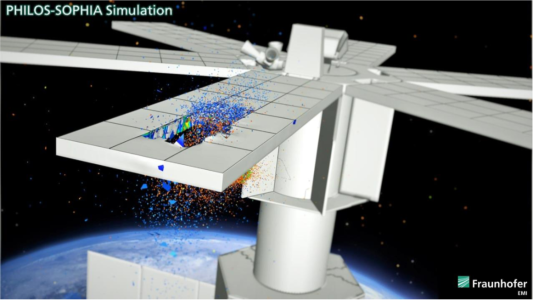Numerical Simulations for Spacecraft Catastrophic Disruption Analysis

While the vast majority of space debris still stems from explosion events of satellites and rocket upper stages, current forecasts state that collisions, such as those between the Cosmos 2251 and Iridium 33 satellites in 2009, will play a dominant role in the mid-term future when a critical spatial density of satellites has been reached. In order to assess the risks emanating from space debris, a deeper understanding of the formation and residence time of breakup debris in orbit is essential for operational activities.
For defining and forecasting the space debris environment, it is crucial to characterise satellite disruptions events in terms of resulting:
- Fragment number
- Size distribution
- Area-to-mass ratio
- Linear and angular momentum transfer of fragments etc.
and to understand how these data depend on the:
- Collision scenario (orbit parameter)
- Kinematic encounter conditions (orientation, velocity)
- Involved objects (mass, geometry, materials, configuration)
